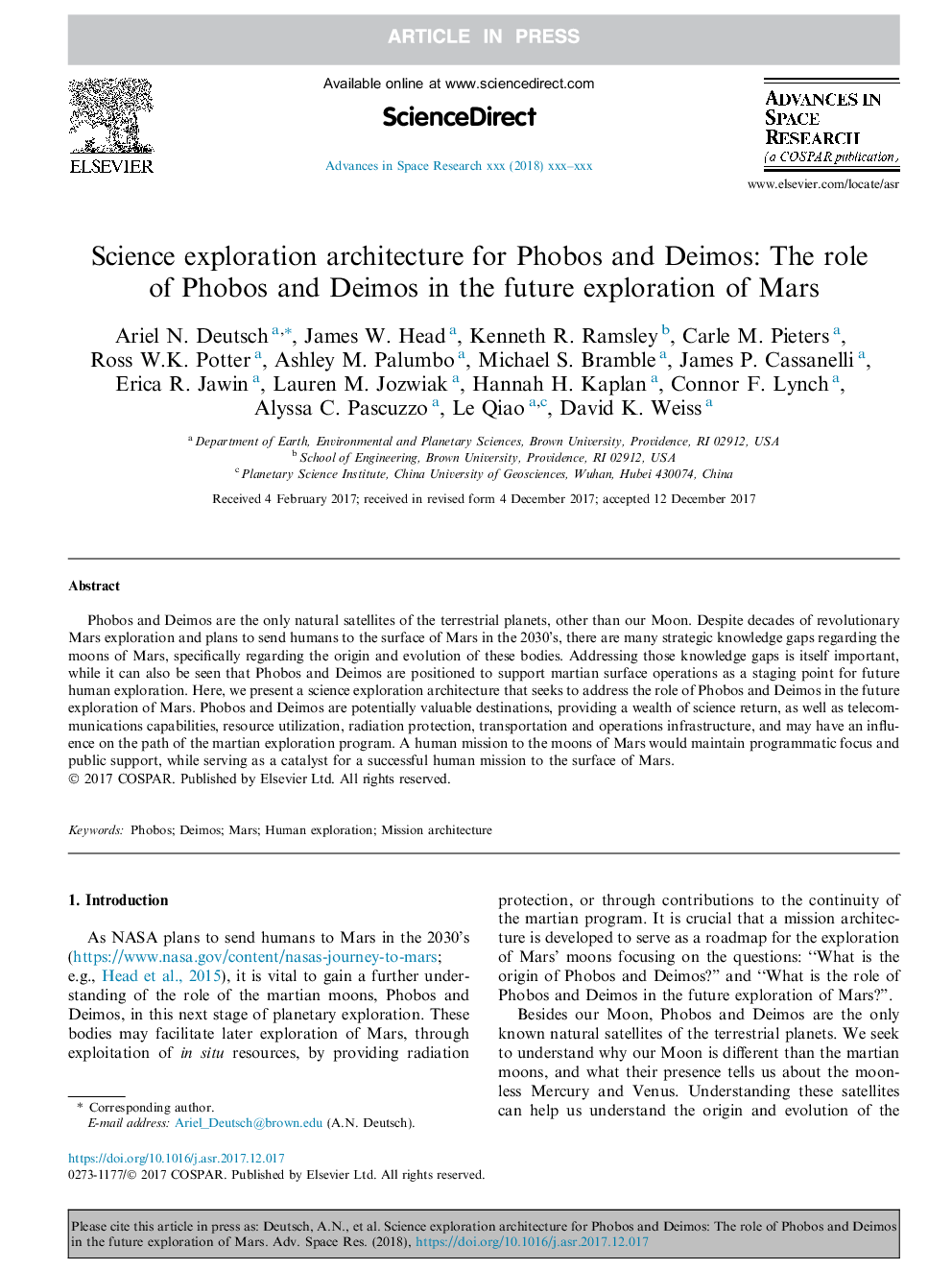| Article ID | Journal | Published Year | Pages | File Type |
|---|---|---|---|---|
| 10156404 | Advances in Space Research | 2018 | 13 Pages |
Abstract
Phobos and Deimos are the only natural satellites of the terrestrial planets, other than our Moon. Despite decades of revolutionary Mars exploration and plans to send humans to the surface of Mars in the 2030's, there are many strategic knowledge gaps regarding the moons of Mars, specifically regarding the origin and evolution of these bodies. Addressing those knowledge gaps is itself important, while it can also be seen that Phobos and Deimos are positioned to support martian surface operations as a staging point for future human exploration. Here, we present a science exploration architecture that seeks to address the role of Phobos and Deimos in the future exploration of Mars. Phobos and Deimos are potentially valuable destinations, providing a wealth of science return, as well as telecommunications capabilities, resource utilization, radiation protection, transportation and operations infrastructure, and may have an influence on the path of the martian exploration program. A human mission to the moons of Mars would maintain programmatic focus and public support, while serving as a catalyst for a successful human mission to the surface of Mars.
Keywords
Related Topics
Physical Sciences and Engineering
Earth and Planetary Sciences
Space and Planetary Science
Authors
Ariel N. Deutsch, James W. Head, Kenneth R. Ramsley, Carle M. Pieters, Ross W.K. Potter, Ashley M. Palumbo, Michael S. Bramble, James P. Cassanelli, Erica R. Jawin, Lauren M. Jozwiak, Hannah H. Kaplan, Connor F. Lynch, Alyssa C. Pascuzzo, Le Qiao,
